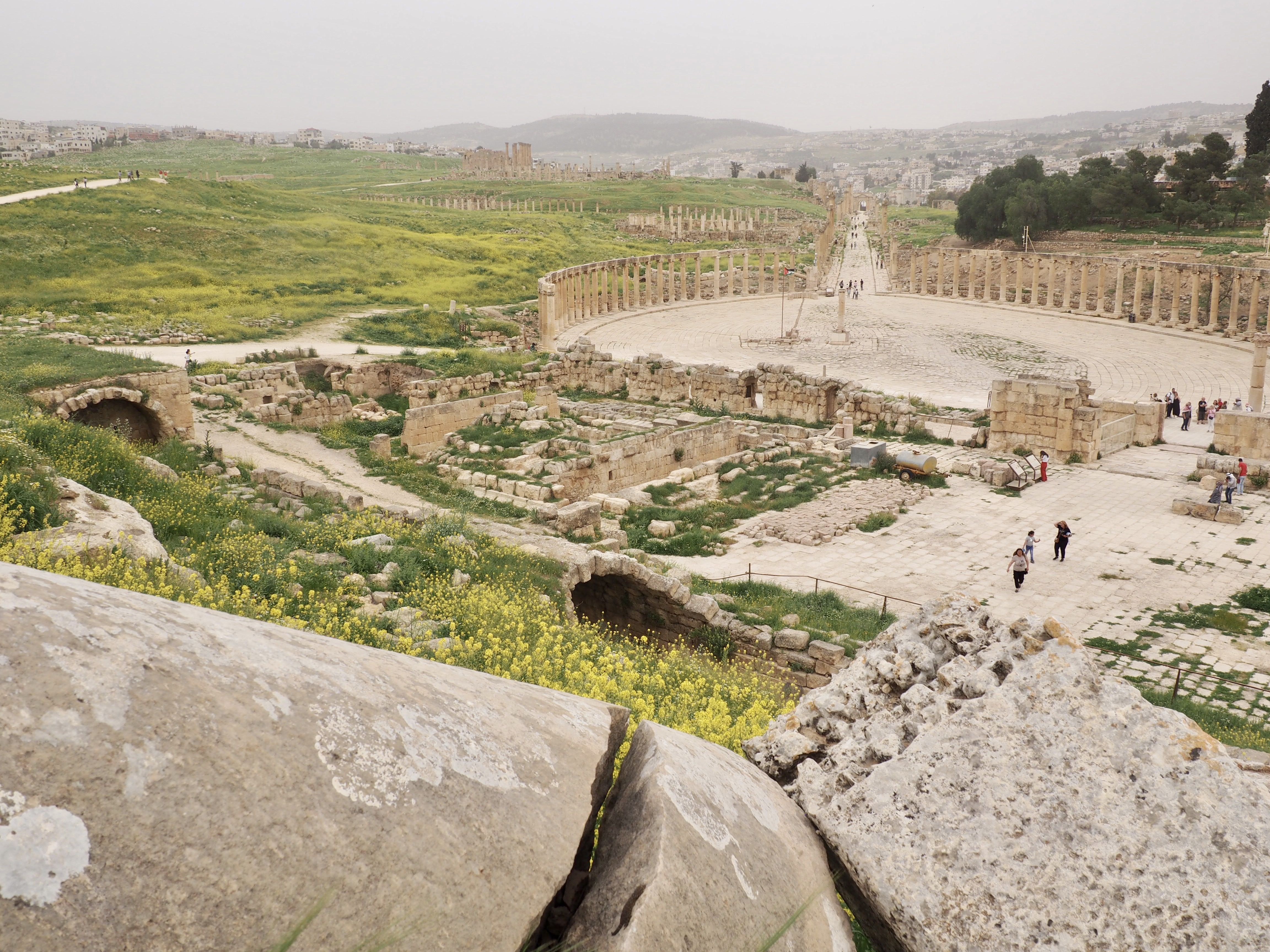
Not known for a storied past, but for its remarkable completeness and state of preservation, ancient Greek inscriptions attribute the founding of Jerash to Alexander the Great in 331 B.C. The Romans took over in 63 B.C. and made it part of their province of Arabia, along with Petra and Philadelphia (Amman).

Having limited time, we took in only part of southern Jerash. The backbone of a Roman city was its Cardo or main street, running north to south, in this case from the North Gate to the Oval Plaza.
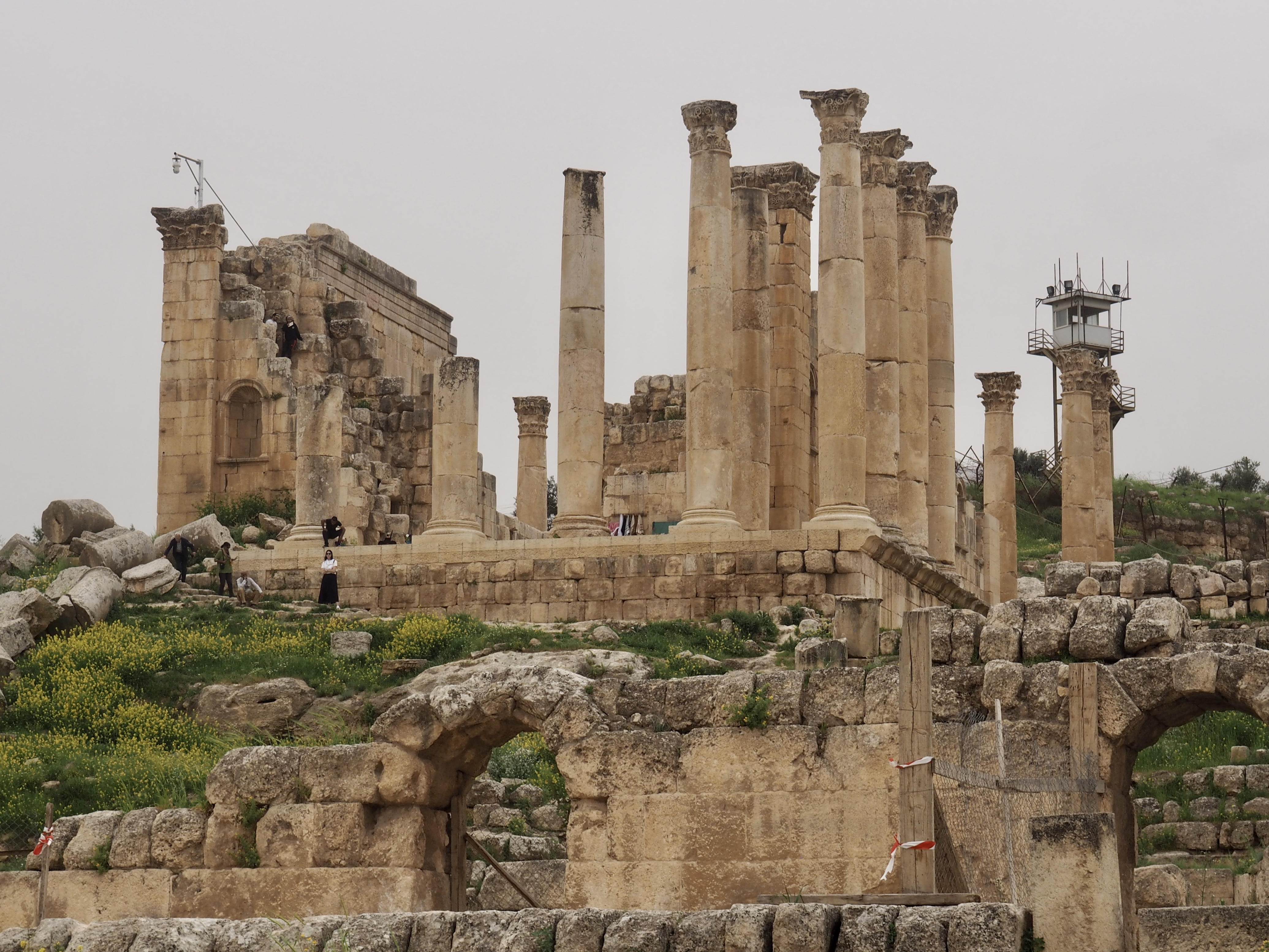
Overlooking the Oval Plaza and the rest of the city is the Temple of Zeus.

And, between the Temple of Zeus and the Oval Plaza lies the Naos of Zeus. Our best guess is that “Naos” refers to a spring.
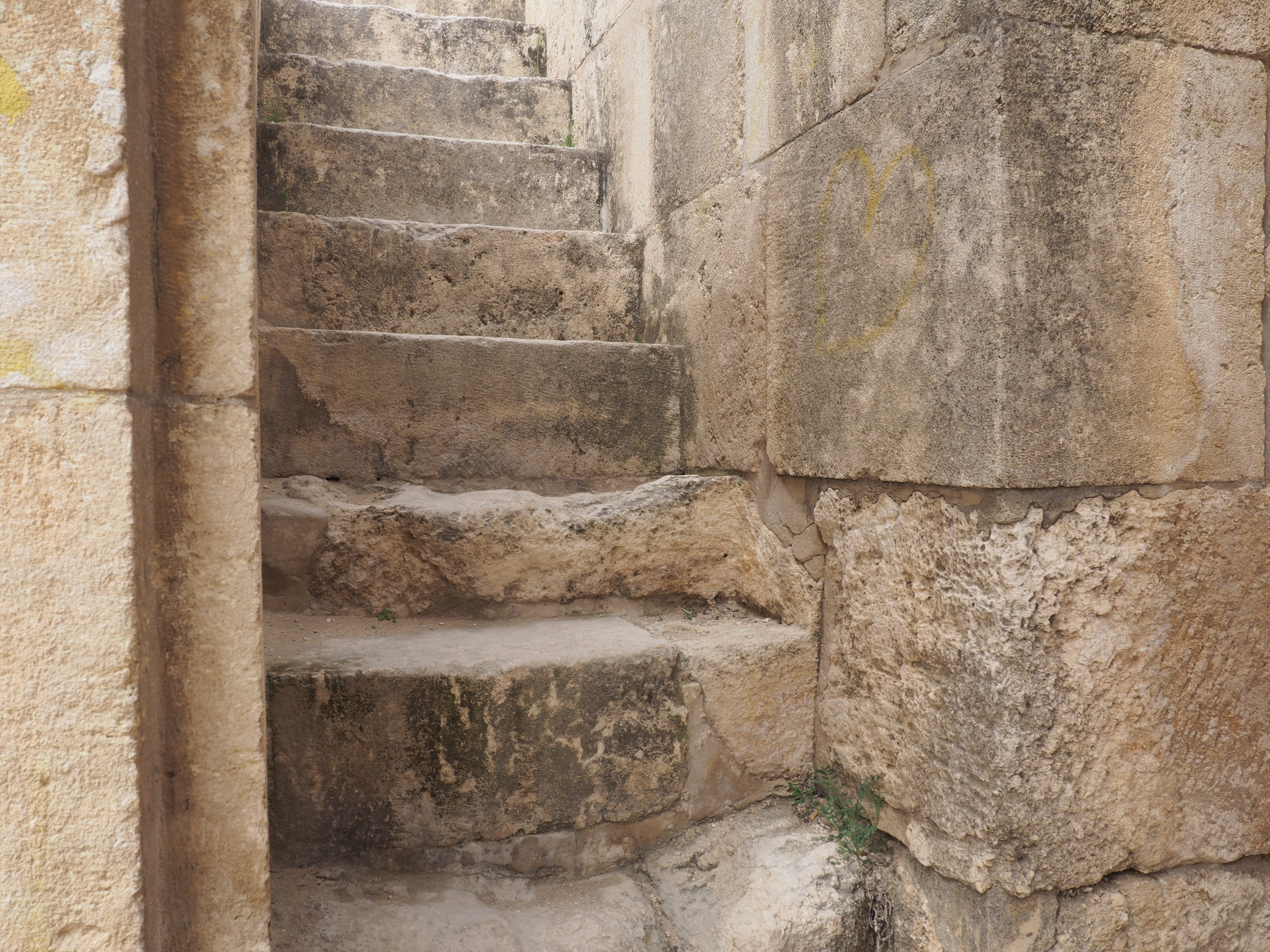
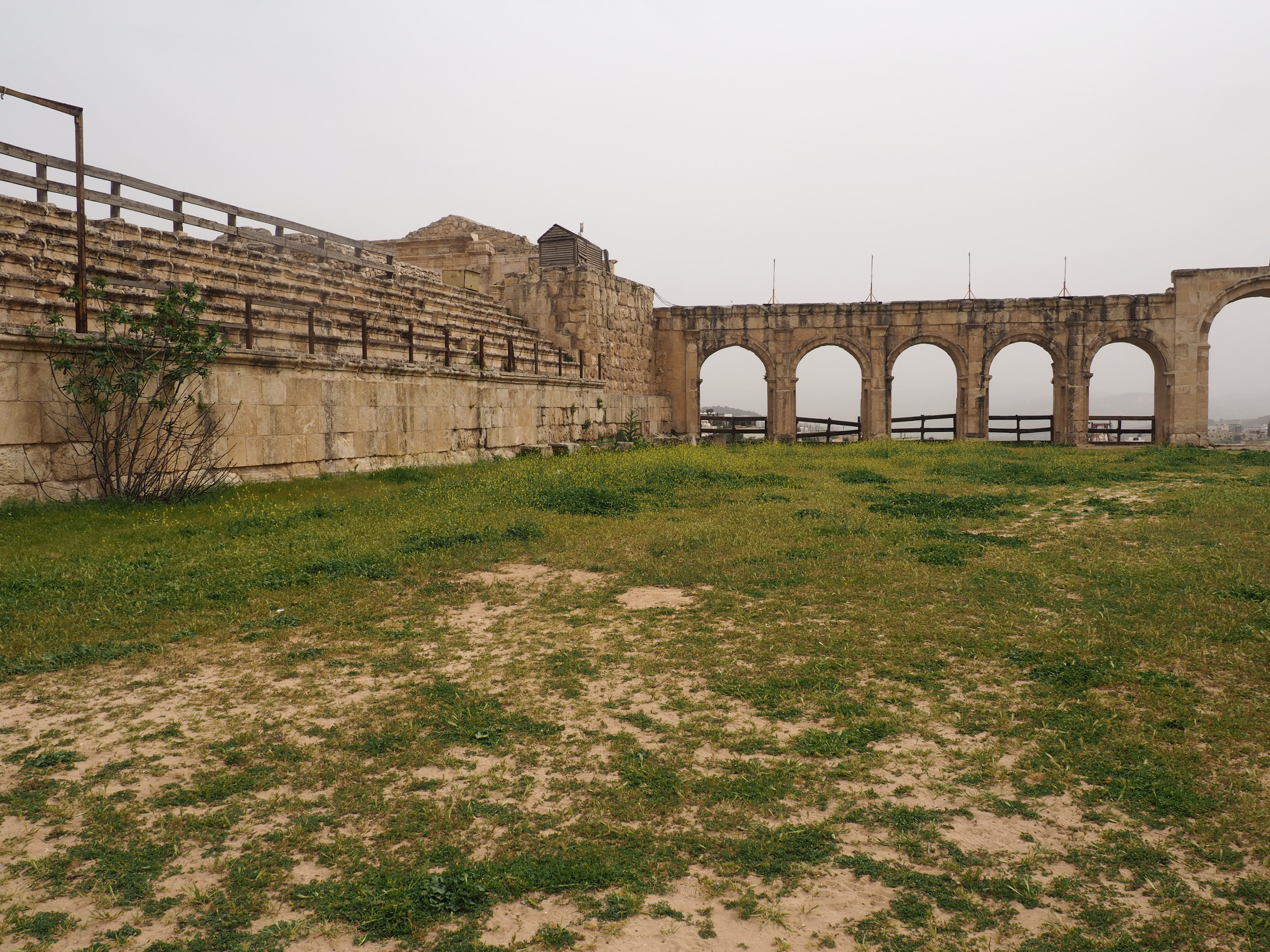
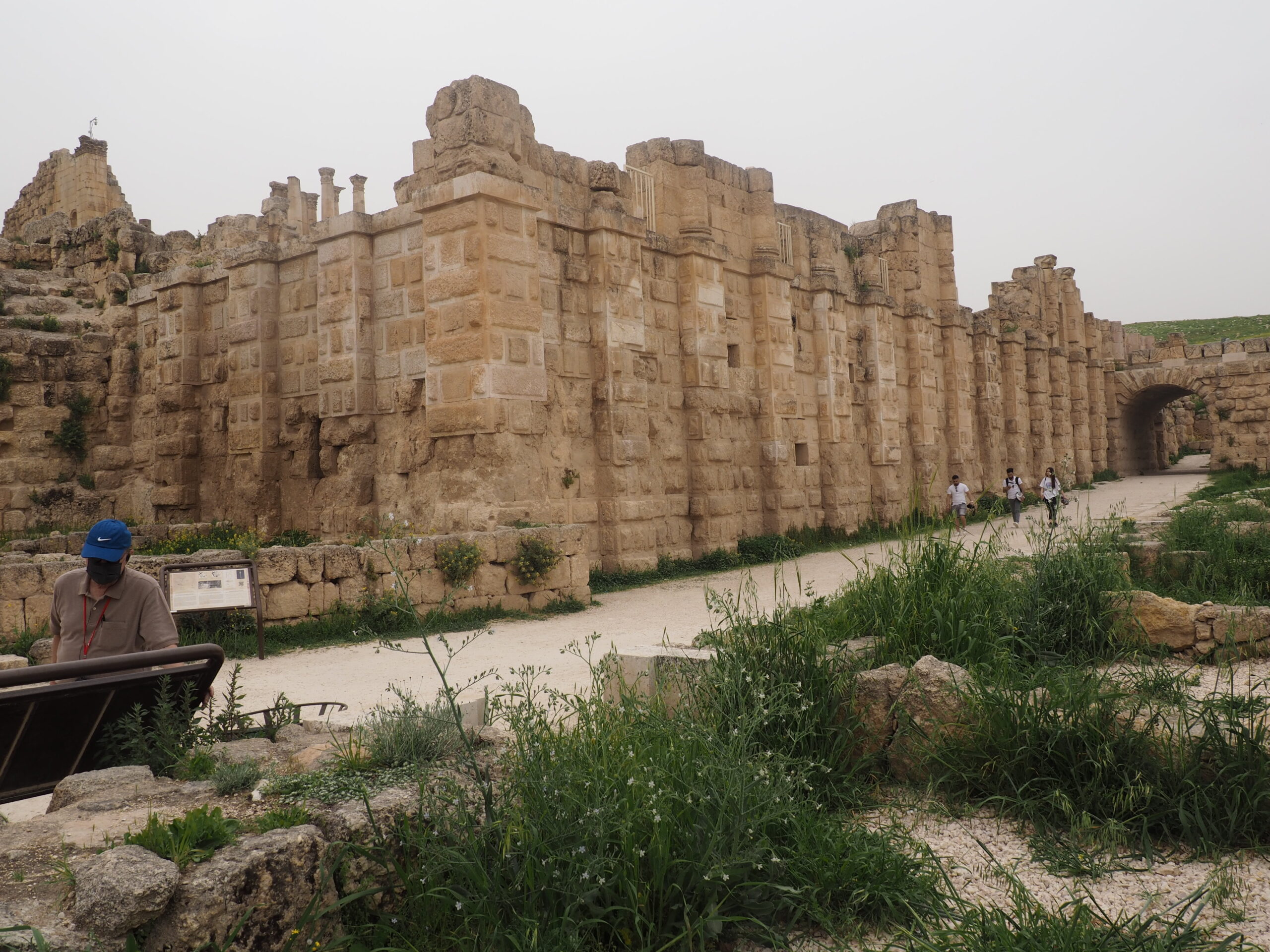
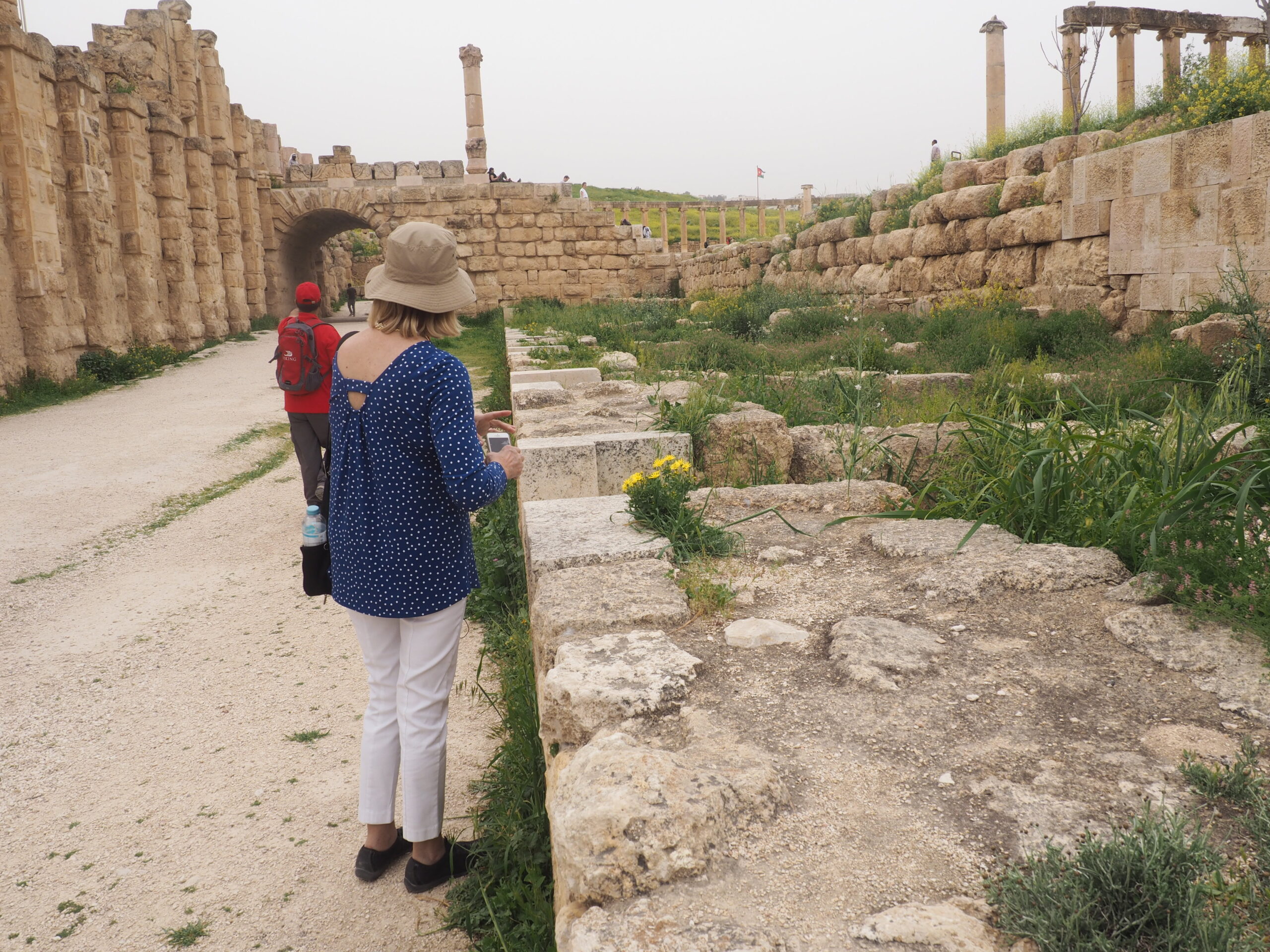
Heading south from the Oval Plaza is the Hippodrome (arena for horse racing).
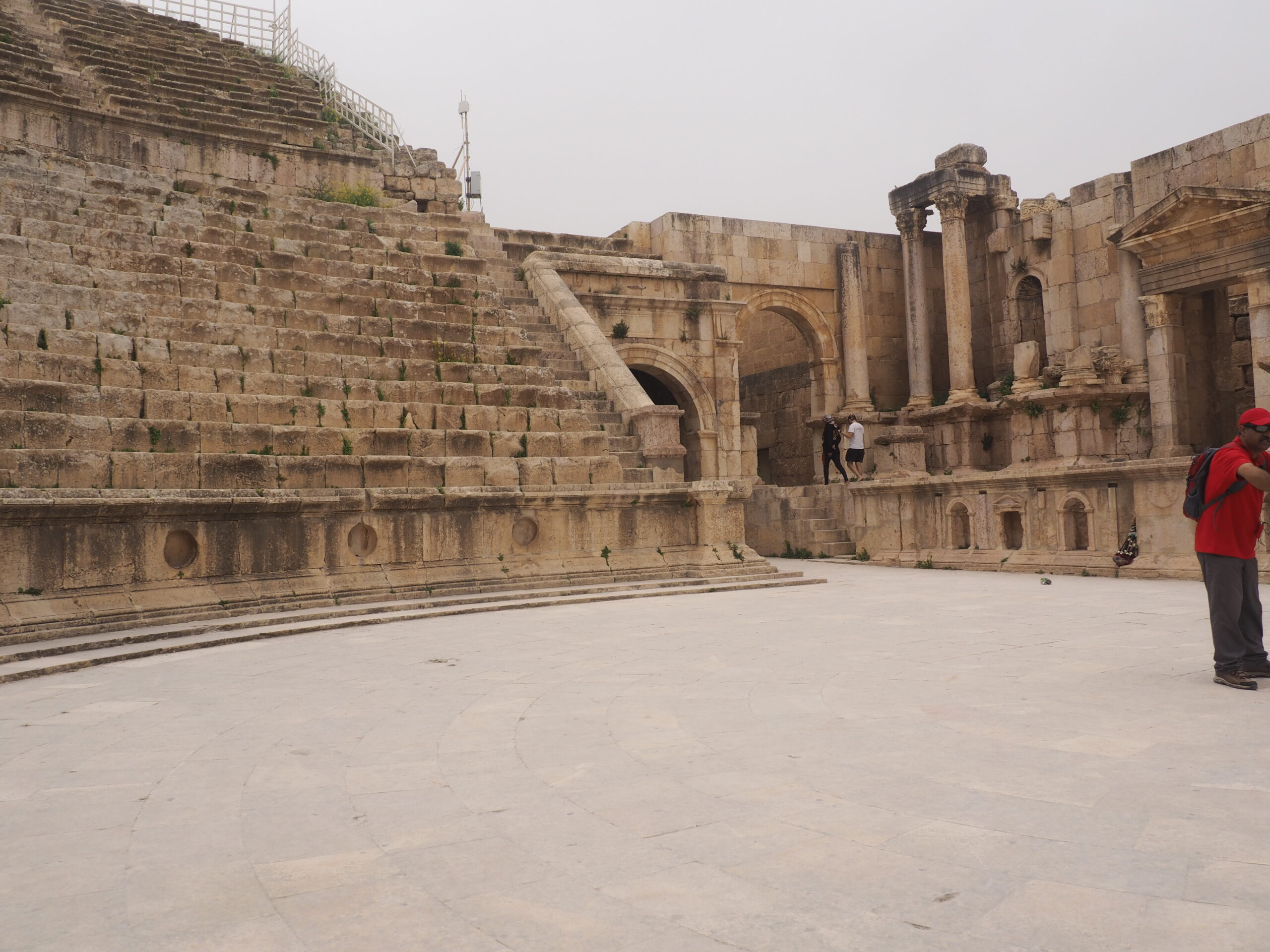
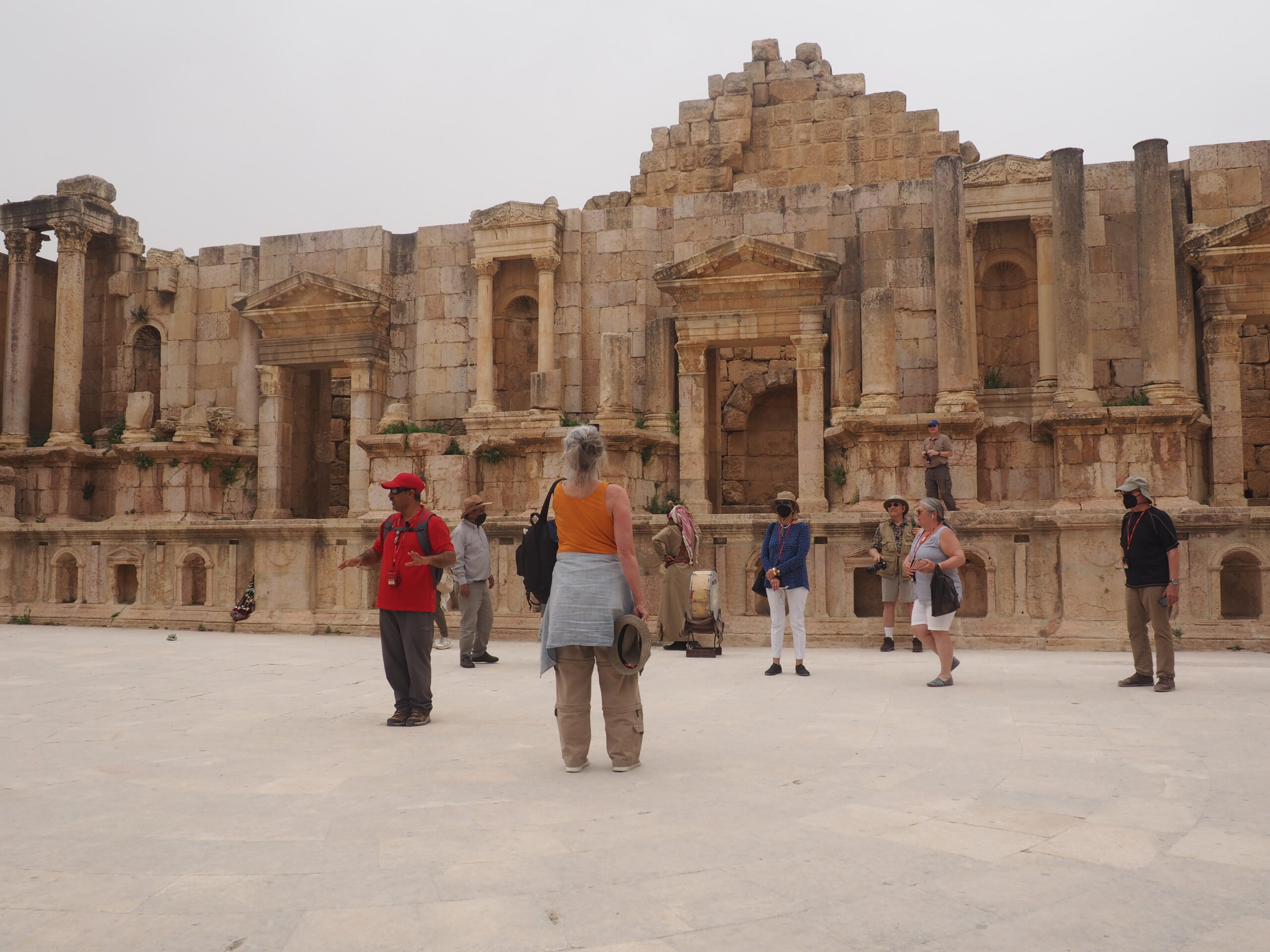
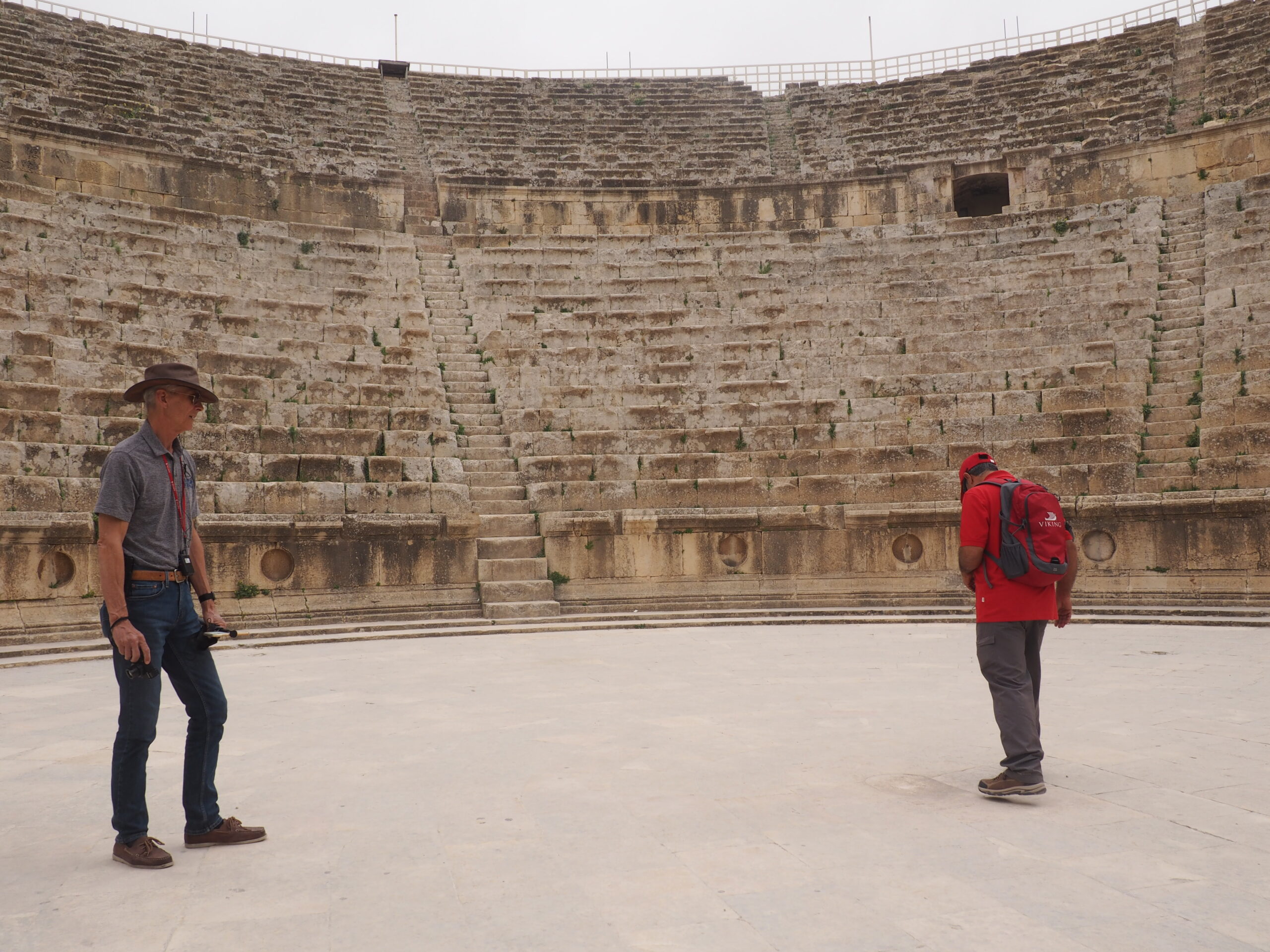
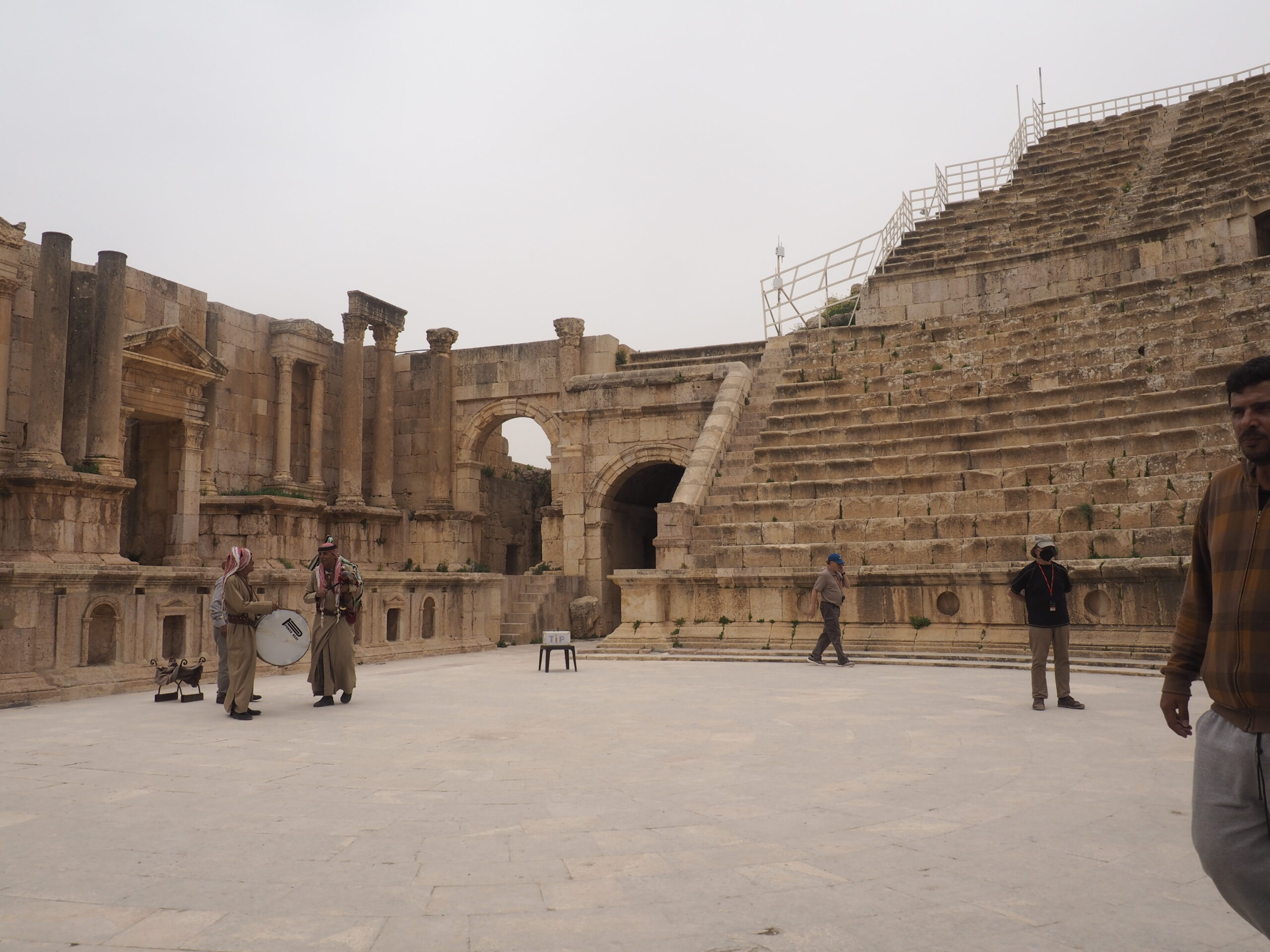
Just above the Temple of Zeus is the South Theater, the most complete theater of its kind we’ve seen anywhere. People got a kick out of standing on the orator’s sweet spot where voice is acoustically projected wonderfully throughout the theater and belting out a song.
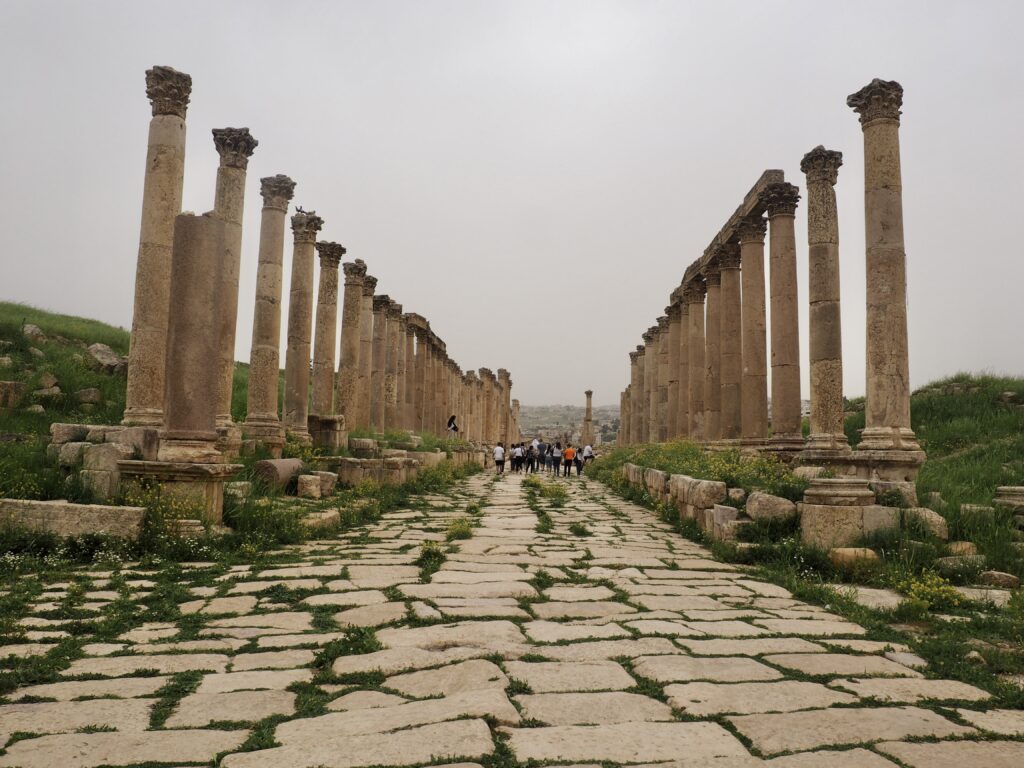

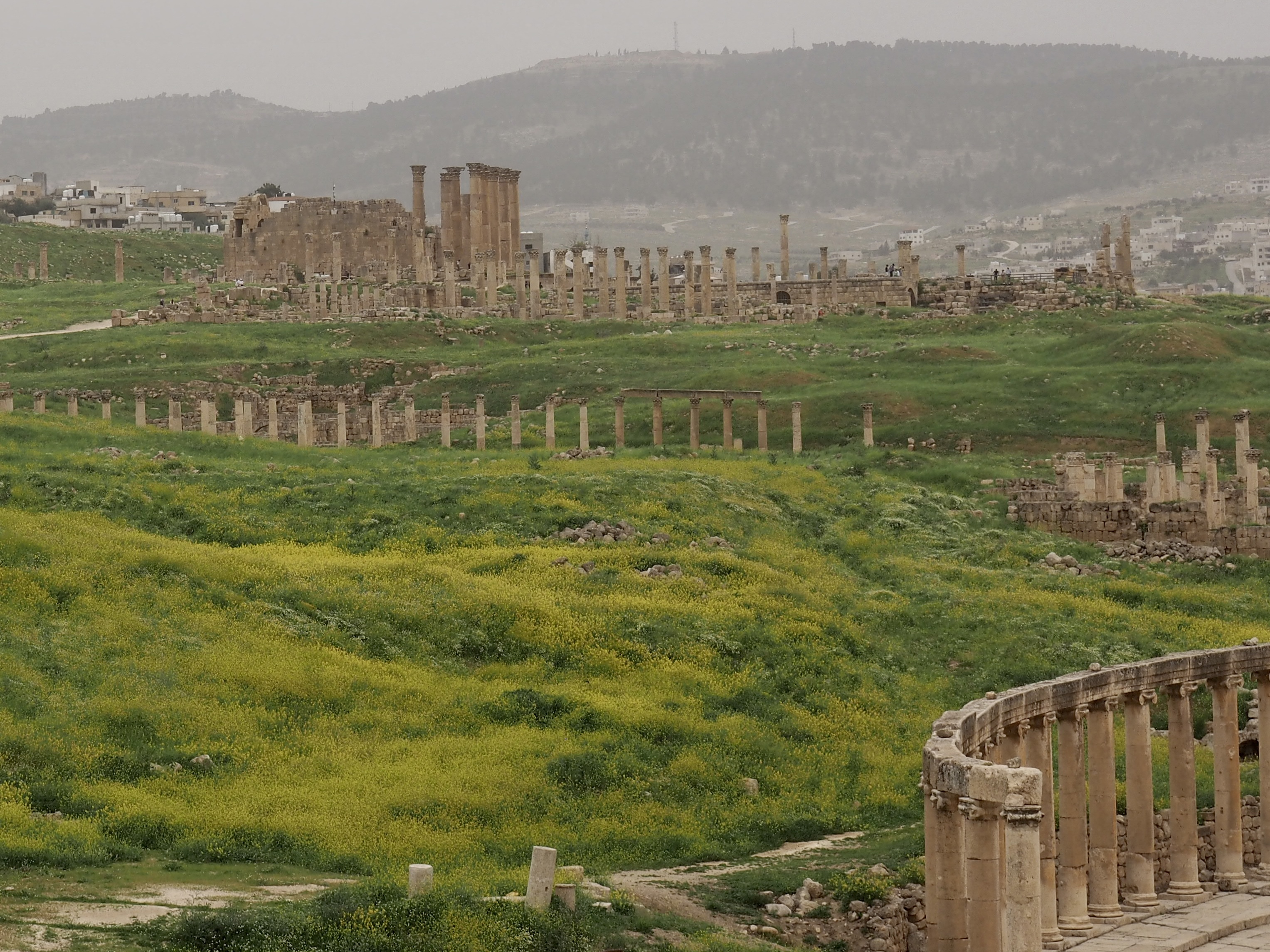
The cluster of tall columns in the distance is the Temple of Artemis.

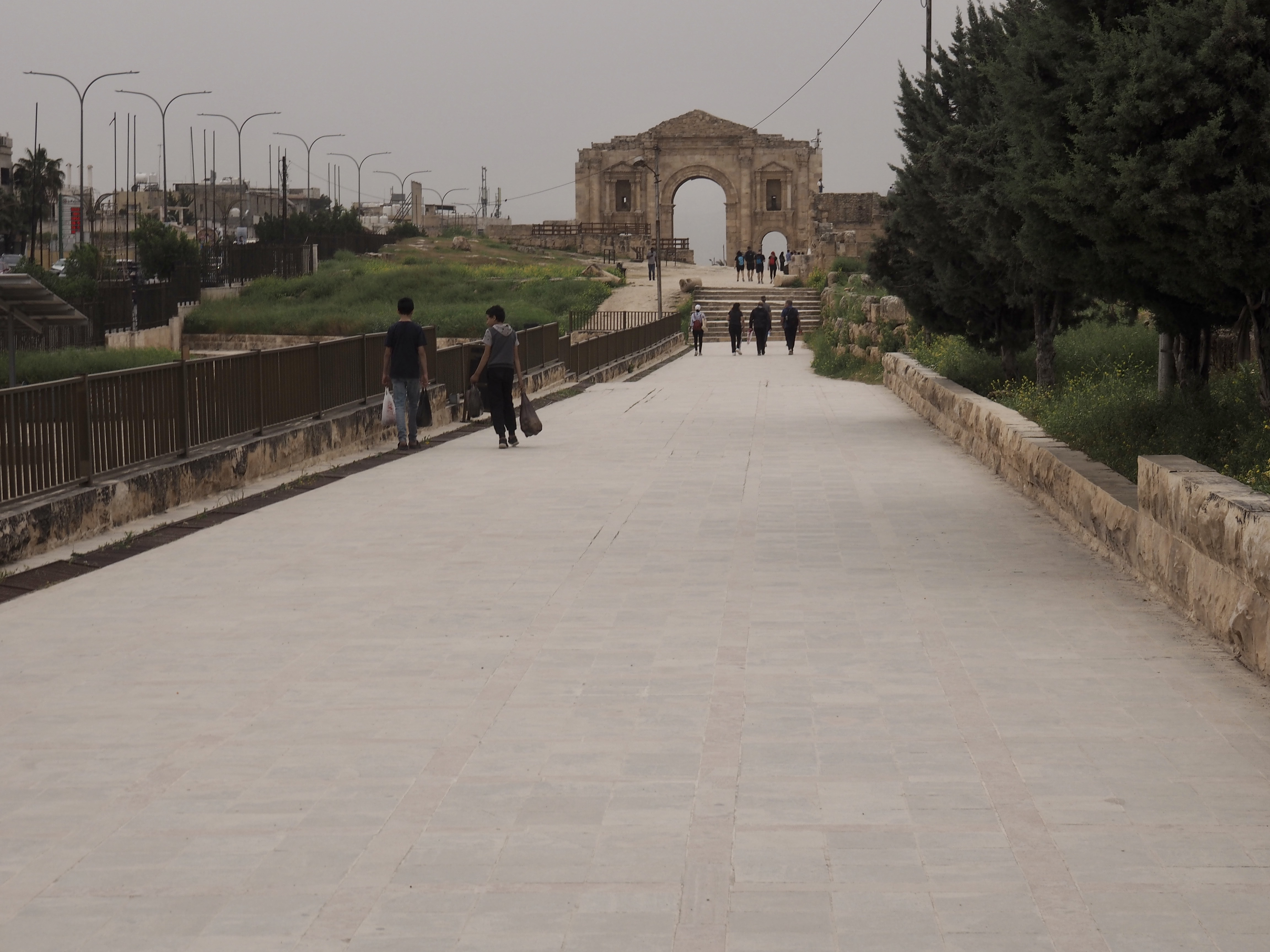
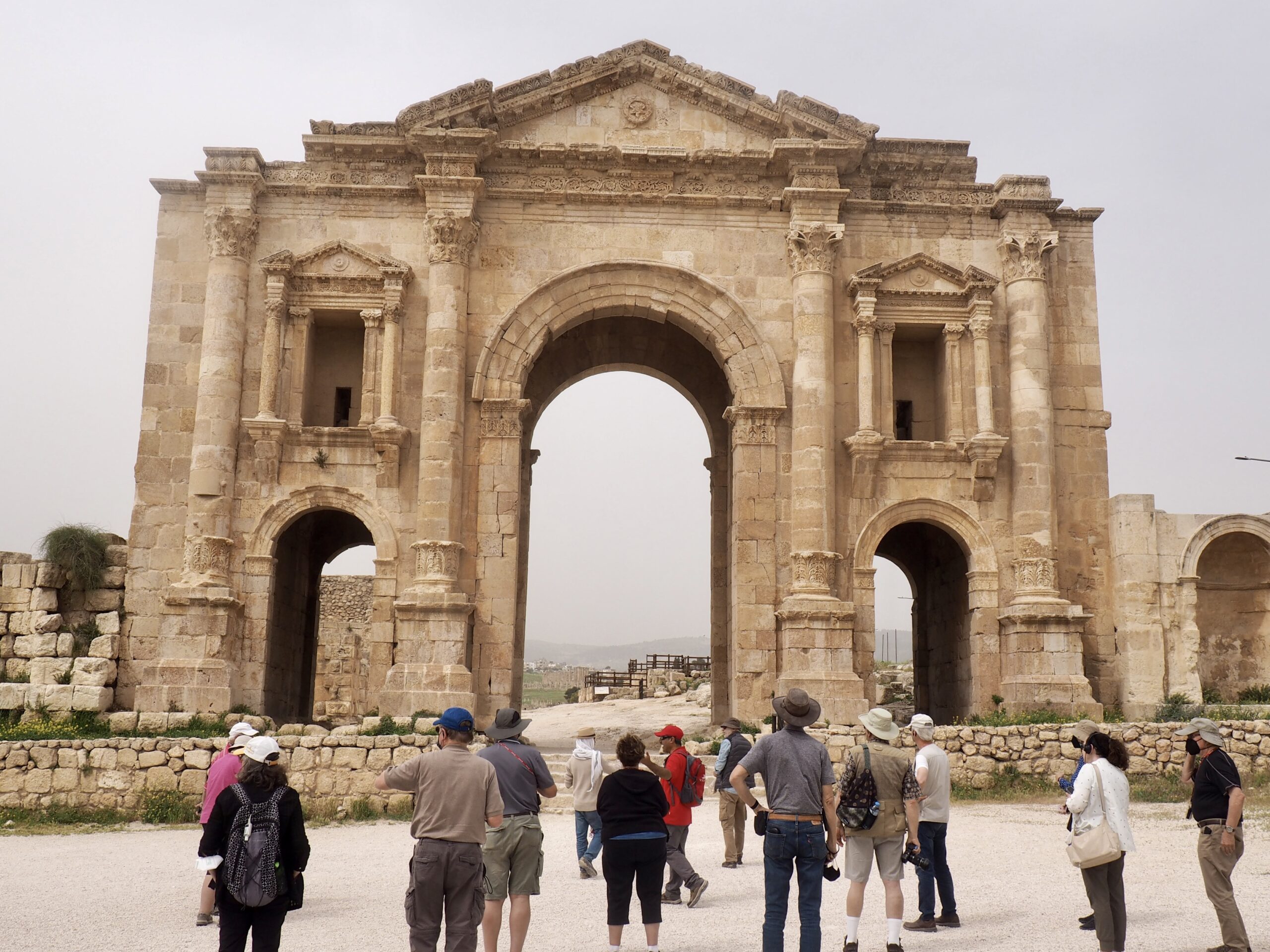
Hadrian’s Arch commemorates a visit to the city by Emperor Hadrian in 129 A.D. Large sections of the city were destroyed by an earthquake in 749 and it was further decimated by later quakes so that the city never really recovered. In the 12th Century, a small Muslim garrison was stationed there, but Baldwin II (crusader king of Jerusalem) then completely destroyed the city. Subsequent development on the site, however, was not directly on top of the Greco-Roman city, but on what had become agricultural land, and did not involve the repurposing of the stone from the ancient city. This accounts for the unusual completeness of the ruins. Sometimes things work out.

